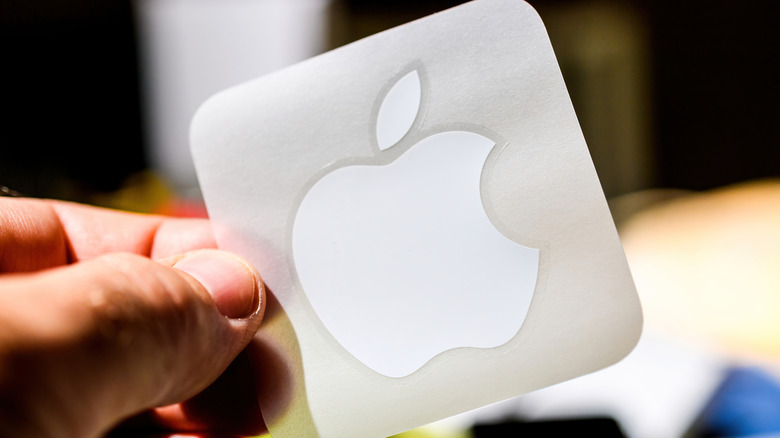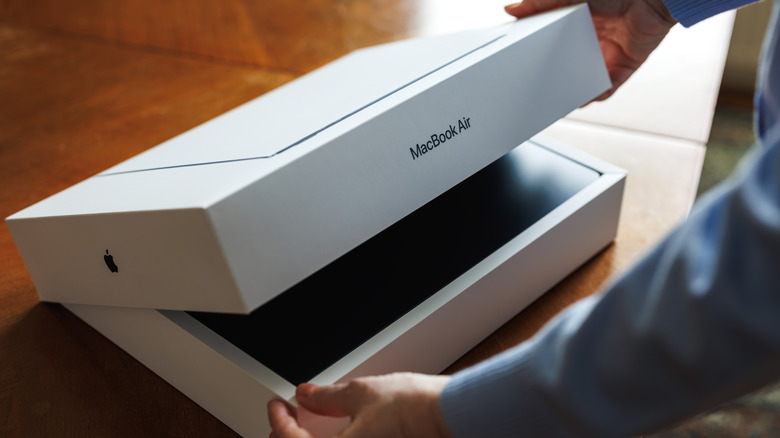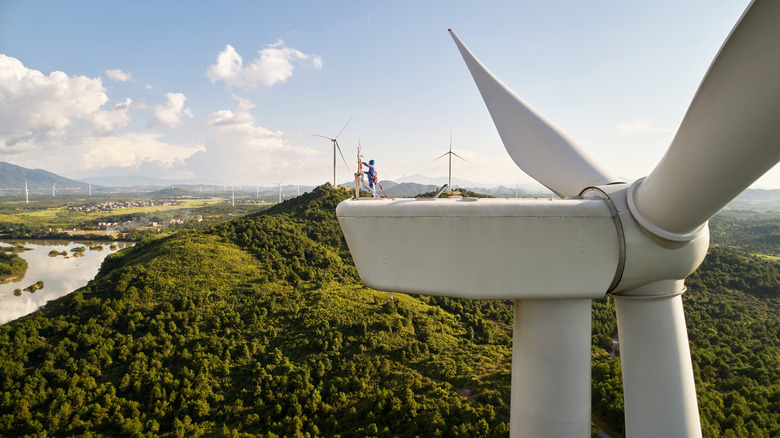Why Don't iPhones Come With Apple Stickers In The Box Anymore?
Apple's iconic logo that has appeared on its most groundbreaking innovations since the '70s is one of the most recognizable. That bitten apple insignia has even been affixed to products and places that have nothing to do with Apple. That is largely the result of an ingenious marketing move that's seen the company packing Apple logo stickers into the box of all its new products. And yes, over the past several decades, Mac-heads have expressed their loyalty to the brand, plastering those stickers everywhere they could.
If you're not a Cult of Mac guru, you may not realize the sticker campaign began back in 1977, with the company placing those stickers in the box of the Apple II. As with many of Apple's most notable products, the stickers have also evolved over the years, with black, translucent, and even color-matched versions finding their way into boxes. While those stickers have proven exceedingly popular with Mac lovers, if you've purchased an Apple device in the past couple of years, odds are that you were surprised to find no sticker in the box.
Despite disappointing some of its fan base, Apple made the move to remove stickers from the boxes of its products as part of the company's noble environmental initiatives. In turn, the company has largely succeeded in phasing stickers out of its packaging process with most new products released since 2024.
Apple is aiming to remove plastics from all its packaging
Apple never offered an official press release regarding the move to stop packing its beloved stickers in the boxes of iPhones and other devices. However, the company did send out internal documents to Apple Store employees regarding the change, which was to begin with the release of 2024's iPads and iPad Pros. The notice reportedly also claimed that Apple was making that change as part of its overarching eco-friendly initiative to remove all plastics from its packaging.
Apple didn't kill the sticker program in one fell swoop, as several other devices sold in 2024 still had them in the box. Moreover, the company was reportedly shipping boxes of stickers to many Apple Store locations, with the stipulation that employees could distribute them upon request. You cannot, however, get your hands on those stickers if you purchase your new Apple gear from any of the brand's third-party retailers.
As for the iPhone, it still shipped with stickers for the bulk of 2024. That changed ahead of the release of the SlashGear Editor's Choice Award-winning iPhone 16, however, with Apple reportedly alerting its in-store staffers that those devices would not come with stickers in September '24. That made them the first generation of iPhone to be sold without a single sticker in the box, marking the end of an era for the beloved Apple devices.
Apple's environmental goals are truly ambitious
Stickers are a relatively small part of Apple's move to eliminate plastic from its packaging. The company has made massive strides in its carbon neutral goals. Apple (clicking that link will download a pdf onto your device) claims that the boxes in which the iPhone 16s are packed are completely fiber-based, stemming from an initiative the brand initiated in 2020. In a press release, Apple announced that it was enacting an ambitious agenda that would ensure the company would be 100% carbon neutral across its entire business by the year 2030. Its corporate operations were already carbon neutral at the time of the press release.
Given the scope of Apple's global operations, achieving 100% carbon neutrality in under a decade might seem overly ambitious. However, the company was already well on its way to reaching those goals at the time of the press release, having redesigned many of its products to use low-carbon and recycled materials. In 2022, Apple used recycled materials in every Apple-branded device, which the company claims will have a net-zero climate impact by 2030.
Apple has also become the first brand to use 100% recycled rare earth elements in a smartphone. It initiated wide-ranging programs to enhance energy efficiency and the use of renewable energy resources, including the expansion of solar arrays and wind farms. So, even if Apple doesn't meet its 2030 goals, it won't be for a lack of trying.


